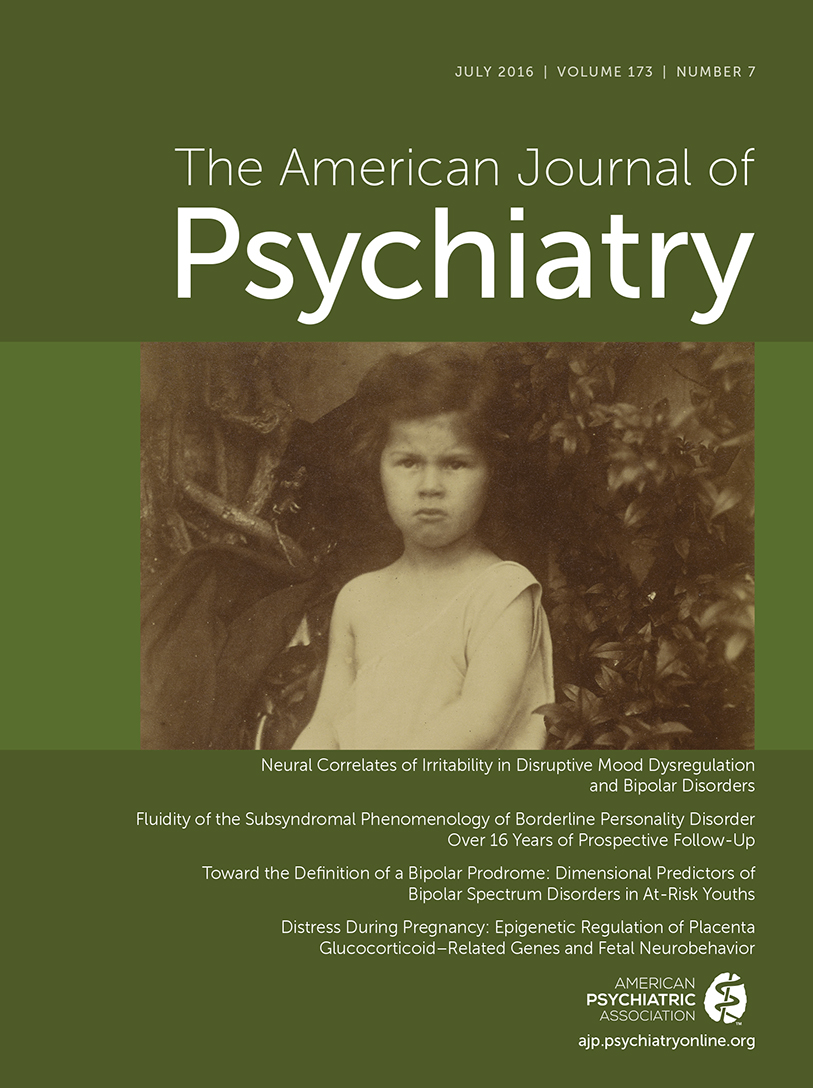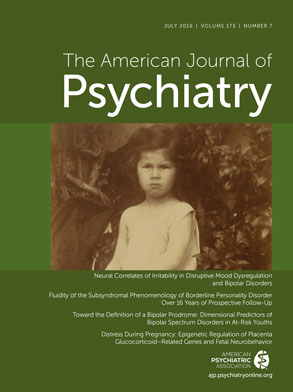T
o the E
ditor: The letter by Sarpal et al. reviews recent work from their group that supports ideas presented in our Review and Overview Article regarding progress and future directions for neuroimaging studies in early-course schizophrenia (
1). We and others have conducted resting state (
2–
4) and task-based functional magnetic resonance imaging (fMRI) (
5) studies to examine antipsychotic treatment effects on functional brain systems in first-episode schizophrenia, and have linked MRI measures to symptom severity and clinical changes following treatment initiation (
6). The recent work by Sarpal and colleagues (as part of a randomized clinical trial) extended this line of work by providing evidence that specific fMRI abnormalities in frontostriatal circuitry can be useful for both tracking and predicting outcomes from acute antipsychotic pharmacotherapy.
Sarpal et al. have reported two major findings. First, they reported that corticostriatal functional connectivity was increased by antipsychotic therapy (
7). We have previously reported that altered frontostriatal connectivity is a common alteration across psychotic disorders (
8), but we have observed a general reduction in corticostriatal connectivity with treatment (
6), as did Anticevic et al. (
9), who related this change to clinical outcome. In contrast, Sarpal et al. observed increased connectivity in frontostriatal circuits but decreased parietostriatal connectivity following antipsychotic treatment of schizophrenia (
7). A number of possibilities might account for these differences, including medication selection, treatment duration, and technical factors, which clearly require further study. Secondly, and of particular clinical interest, Sarpal et al. reported that pretreatment MRI alterations could predict acute treatment outcome (
10). Thus, their findings provide important continuing support for the potential predictive value of pretreatment alterations in functional brain connectivity in relation to acute treatment outcomes. This finding contrasts with our 1-year follow-up study in which pretreatment resting state fMRI data did not predict long-term clinical outcome. Thus, resting state fMRI data may be more useful in predicting acute treatment effects than longer-term role function and persistent residual symptom severity. Importantly, and perhaps not surprisingly, fMRI seems more useful for predicting and tracking clinically relevant acute treatment outcomes than anatomic imaging. Acute anatomic changes in the striatum and other regions have been reported (
11,
12) but often in different brain regions from those where functional alterations have been observed. The reasons for these dissociations and their mechanisms require further study in patients and in animal models so that the relative clinical utility of anatomic and functional changes can be evaluated and best exploited.
The broader message of the letter from Sarpal et al. is its emphasis on the promise of MRI data to provide useful biomarkers for psychotic disorders. In this sense, their work supports a primary argument of our article (
1), on which this commentary was addressed. The critical need for brain-based biomarkers is an urgent one in our field for treatment development and in the longer term for clinical practice. This prospect is consistent with the broad aims of the Research Domain Criteria project from the National Institute of Mental Health. Similarly, there is increasing interest within radiology in the potential of applying quantitative MRI methods in the clinical evaluation of psychiatric patients. The work from Dr. Sarpal’s group contributes meaningful foundational support for ongoing efforts to move forward in this area. Biomarkers that can predict treatment response could potentially help stratify patients in clinical trials, determine whether antipsychotic treatment is indicated in prodromal and early-course patients, elucidate the distinct subgroups of patients with psychotic disorders having distinct pathophysiological alterations (
13), and predict response to different therapeutic strategies based on individual patient characteristics. Evidence continues to accumulate indicating that MRI studies of connectivity, anatomy, and chemistry may be useful for such purposes in ways that could significantly improve personalized medicine for patients suffering from psychotic disorders.

